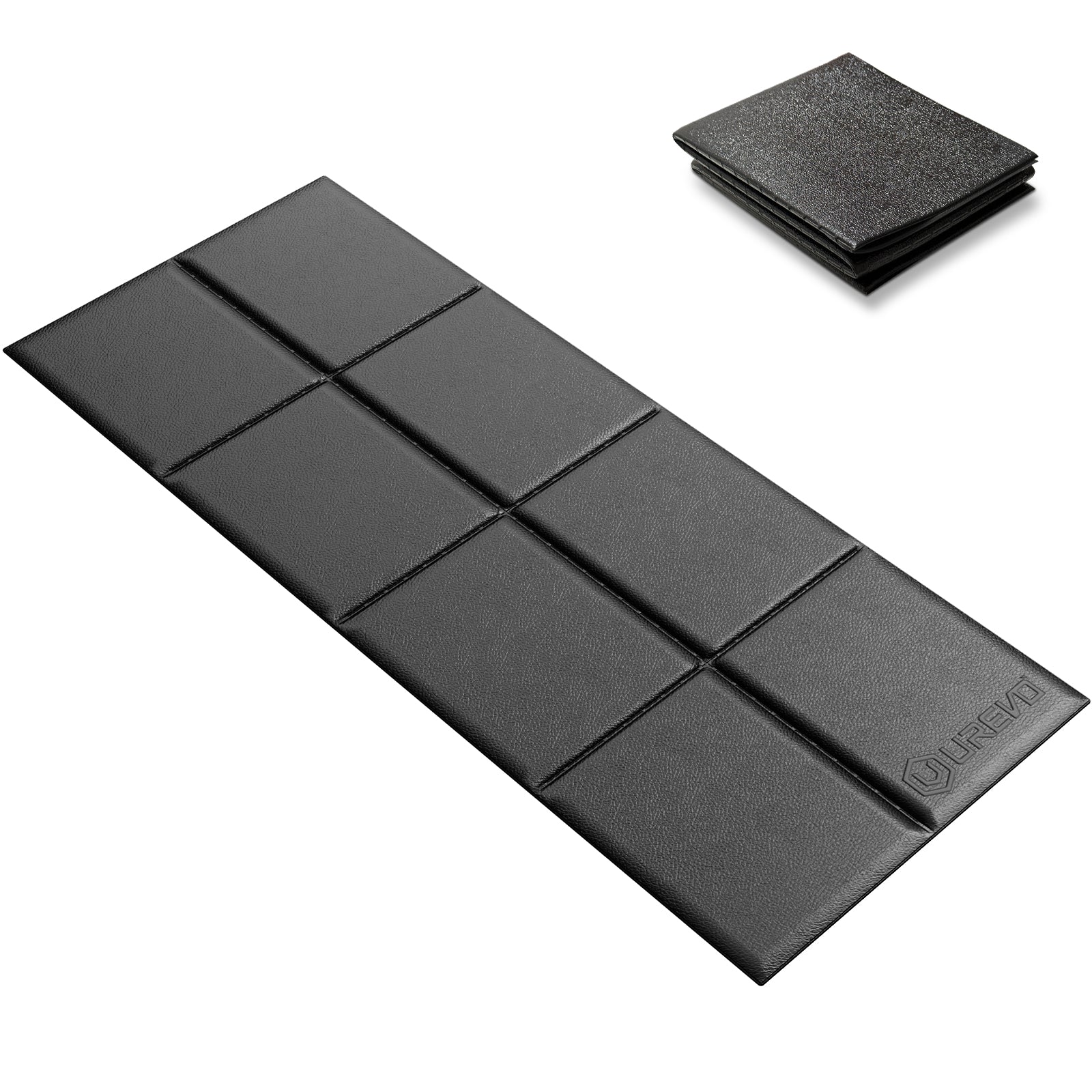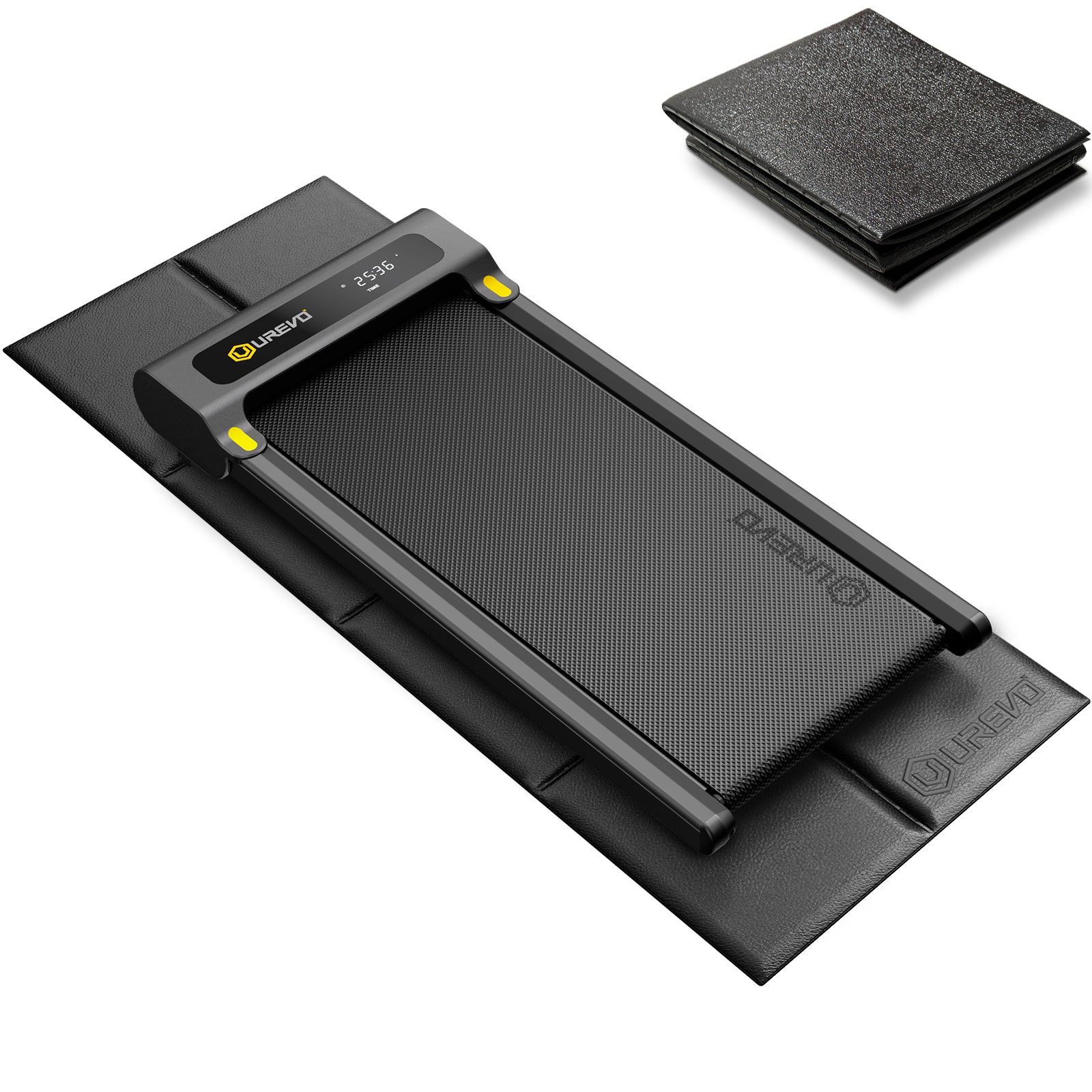When speaking of indoor exercise equipment, two essential pieces of equipment often come to mind: walking pads and treadmills, each of which offers unique advantages for fitness enthusiasts of all levels. But somehow, choosing between them can be perplexing. This article will focus on the core similarities and differences between these two types of equipment, guiding you on which might best suit your fitness goals and living space.
How a Walking Pad Compares to a Treadmill

A walking pad, sometimes referred to as a walking treadmill, is a compact, often foldable machine designed primarily for walking at a range of speeds. Treadmills, on the other hand, are generally larger and engineered for both walking and running, with more robust features.
Key Similarities
Walking pads and treadmills share several core features that make them staples in home fitness:
Controlled Indoor Environment
Both devices allow for exercise in any weather, making them excellent for maintaining a consistent workout routine. This feature is particularly beneficial during extreme weather conditions, such as heavy rain, snow, or severe heat, where outdoor activities might be unsafe or uncomfortable.
Health Tracking Features:
Almost all models come equipped with digital displays that monitor and report key data during your workout. This typically includes:
- Distance: How far you have walked or run during the exercise session.
- Time: The duration of the current workout.
- Calories Burned: An estimate of the total calories expended during the workout, helping users manage their weight loss or maintenance goals.
These metrics are crucial for users who are monitoring their progress toward specific fitness objectives, such as increasing stamina or weight loss.
Cardiovascular Benefits
Both walking pads and treadmills are effective for aerobic workouts, which improve heart health by increasing heart rate and circulation. Regular use of these machines can help reduce the risk of heart disease, lower blood pressure, and improve overall cardiac function.
These similarities make both walking pads and treadmills versatile tools in achieving a range of fitness goals, from improving general health to specific conditioning such as endurance training or muscle toning.
Characteristic Differences
| Feature | Walking Pad | Treadmill |
|---|---|---|
| Size and Portability | Slim, lightweight, and often foldable for easy storage under furniture. Ideal for small spaces. | Bulky and heavy, requiring a dedicated space. Less portable. |
| Functional Capabilities | Primarily designed for walking with limited speed options. | Supports a wide range of speeds, including high-speed running and interval training, with incline and sometimes decline features. |
| Price Point | More affordable due to simpler design and fewer features. | Generally more expensive due to advanced features and functionalities. |
Walking pads and treadmills, while fundamentally similar, exhibit several critical differences that dictate their use, suitability, and value to different users. Below are the key distinctions outlined in detail:
Size and Portability
- Walking Pads: They are designed for convenience and space-saving. Many models are notably slim and lightweight, and they often feature a foldable design that allows them to be stored with ease under furniture like beds or sofas. This makes walking pads an ideal choice for those living in apartments or homes with limited space.
- Treadmills: Typically more robust and larger, treadmills require a dedicated area within a home or gym. Their size and weight make them less suitable for moving and storage, necessitating a fixed spot for placement.
Functional Capabilities
- Treadmills: They offer a wider range of speeds, from very slow walks to sprints and often feature adjustable inclines and sometimes even decline options, which can simulate various terrains and intensify the workout, making them suitable for serious runners or those looking to enhance cardiovascular fitness and strength aggressively.
- Walking Pads: Generally limited to walking speeds, these devices are perfect for users interested in gentle, regular physical activity. The speed limitations ensure safety and ease of use for walking, especially for users who may need a less strenuous exercise regimen due to health reasons or preferences.
Price Point
- Walking Pads: They are more budget-friendly, reflecting their simplicity and focused functionality. The lower cost makes walking pads an accessible option for individuals looking to incorporate light physical activity into their routine without a hefty financial commitment.
- Treadmills: With advanced features such as programmable workout routines, heart rate monitors, and integrated entertainment systems, treadmills are often pricier. They represent a significant investment but are justified by their versatility and the ability to cater to a broader range of fitness needs, from basic walking to intense running and endurance training.
Who Should Choose a Walking Pad or Treadmill

Walking pads are ideal for individuals who prefer light exercise, such as walking, and need a compact, easy-to-store unit. They are also well-suited for those who wish to multitask while exercising, like walking while working at a standing desk.
Treadmills are better suited for those who take their workouts more seriously and require options like running, incline, and advanced training programs. They are perfect for individuals training for races or who need a more varied exercise regimen. Additionally, families or multiple users often find treadmills more accommodating due to their versatility.
Final Words
Both walking pads and treadmills offer valuable ways to enhance your fitness. The decision between them should be influenced by your specific exercise needs, space availability, and budget. If you prefer gentle, regular walking in a small apartment, a walking pad might be the ideal choice. Conversely, if your fitness regime calls for a broader range of activities and you have the space for it, a treadmill would be a more appropriate investment.
FAQs
Q1: What are the energy consumption differences between walking pads and treadmills?
A1: Treadmills tend to consume more energy than walking pads due to their larger motors and additional features like incline and speed variability. Walking pads are generally equipped with smaller motors, tailored for lower speed exercise, making them more energy-efficient. If energy consumption is a concern, a walking pad might be the more economical choice, especially for those who plan to use the machine primarily for walking.
Q2: Can walking pads be effective for users with mobility issues?
A2: Yes, walking pads can be particularly beneficial for users with mobility issues. Their compact size often allows for easier accessibility, and the lower speed settings help in providing a safe exercise environment. Additionally, the simplicity of operation and the absence of inclines make them suitable for individuals seeking gentle exercise to maintain mobility without overwhelming their capabilities.
Q3: How do the durability and maintenance requirements compare between walking pads and treadmills?
A3: Treadmills generally require more maintenance due to their complex mechanisms and usage for intense workouts. Regular lubrication of the belt, motor inspections, and adjustments to the belt tension are common maintenance tasks for treadmills. Walking pads have fewer mechanical complexities, which can translate to lower maintenance needs and potentially longer durability, especially if used within their operational limits of walking speeds.
Q4: How much space is really needed for a treadmill compared to a walking pad?
A4: Treadmills generally require more space not only for the unit itself but also for safe operation around it. A typical treadmill might need an area of at least 6 feet by 3 feet, plus additional clearance space around it for safety. Walking pads can be used in much tighter spaces and stored away easily, making them ideal for small living areas.
Read More
- Is the Treadmill Walking Pad Effective? Exploring Benefits and Drawbac – Urevo
- Worth It to Get a Foldable Walking Pad Treadmill: A Comprehensive Anal – Urevo
- Walking Treadmill Pad: Your Secret Weapon for Effective Weight Loss – Urevo
- 8 Reasons Why UREVO is Considered the Best Treadmill for Under Desk – Urevo
- Review: Spacewalk E3 Mini Treadmill for Home Use by YouTuber @KevTheTr – Urevo











